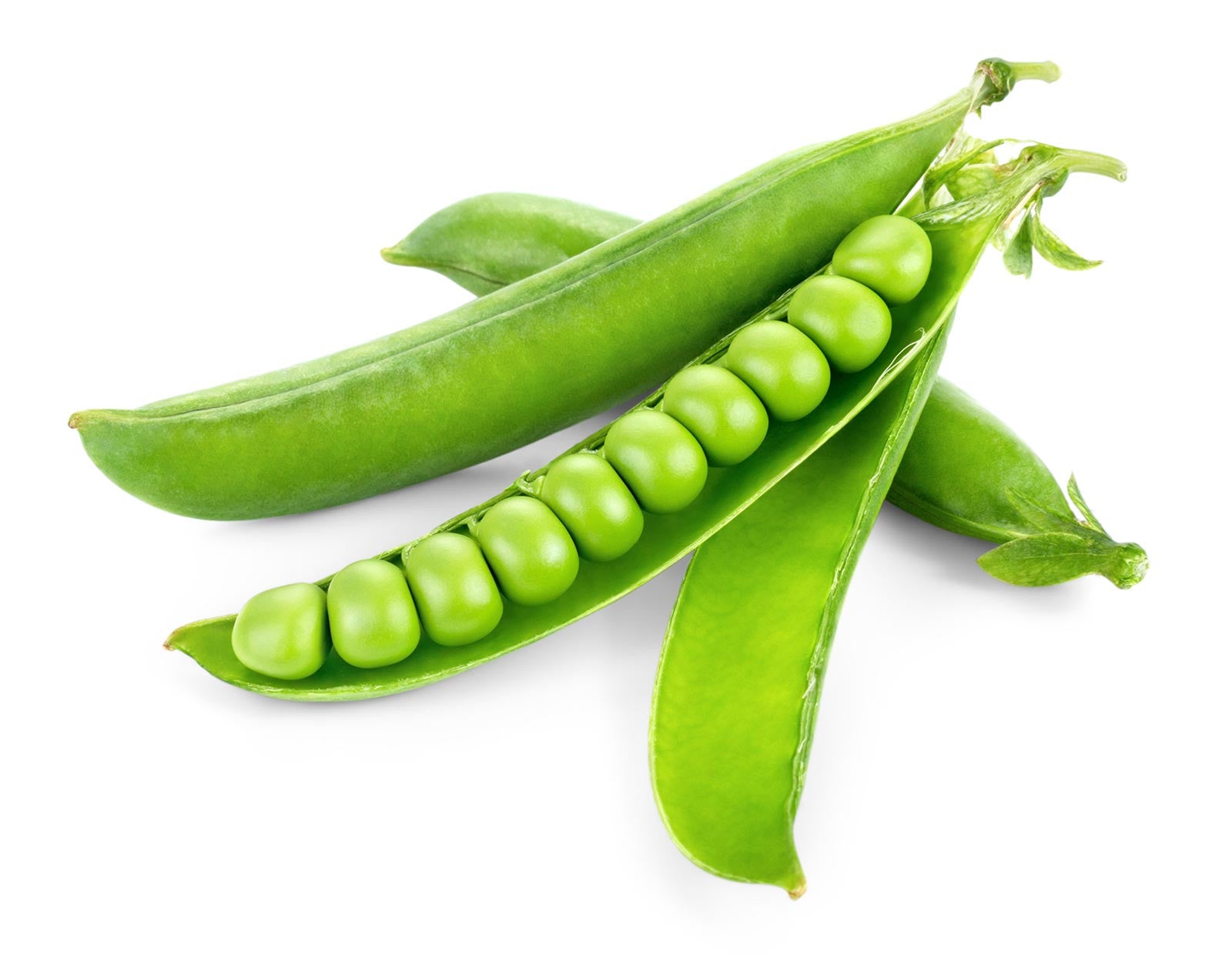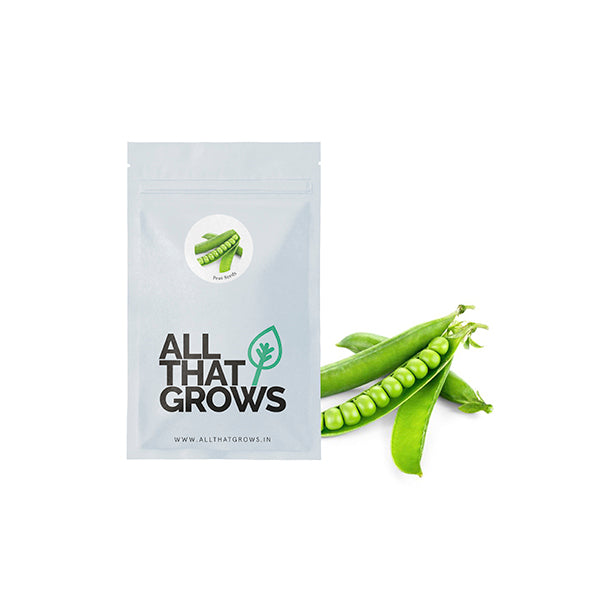



Peas Seeds
Seed Type : Non-Hybrid, Open Pollinated and Non-GMO
Sowing time : Round the year, as per local climatic conditions
Plants : Dwarf and erect, tolerant to Powdery Mildew
Pods : 4-5 inches long, 9-10 grains inside, attractive light green
Pod shape : Very thin, almost round like finger,
Seeds : wrinkled and sweet
Maturity : After 55-60 days from sowing.
Specification : Bears 2 fruits per node as short intermodal distance which results in very high yield.
- SOWING
TIMEYear round, as per local climatic conditions
- Sowing
DistancePlant to plant - 4"
Line to line - 12" - Fruit
WeightN/A
- Fruit
ShapeLong
- Days to
maturity55-60 days
- Details
- How to sow
- Reviews
Peas, botanically a fruit, belong to the Fabaceae family of flowering plants just like cowpeas and pigeon peas. Peas are also recognized as the only legume to be consumed fresh unlike the lentils, pulses, and chickpeas that are sold in the dried form. Considered as one of the earliest food crops to be cultivated, peas are most abundantly produced in Canada with France, China, Russia, and India next in line. The fresh green peas come packed with phytonutrients, specially coumestrol, that protects against stomach cancer. Another phytonutrient found only in peas is saponin. Being low on the glycemic index and high on the fibre and protein content, the risk of developing Type 2 diabetes is also down to a minimum if you consume peas regularly. These also come loaded with antioxidants and nutrients like Vitamin A, C, B6, K, iron, zinc, copper, magnesium, and phosphorous.
Eating the sweet-tasting green peas is effective in maintaining cardiovascular health, and limiting neuronal damage while slowing down the progression of Alzheimer's disease. Feel free to add peas to whatever you eat. Steam, boil, sautee, bake, grill, fry! Go ahead and put it in soups, pastas, sandwiches, salads, or even in curries. Can be used both fresh and frozen.
Planting instructions
Prepare pea planting beds in the fall by adding manure and mulch to the land. Pea roots will fix nitrogen in the soil, making it available for other plants.
Sprinkle wood ashes over the soil before planting.
Sow seeds outdoors 4 to 6 weeks before spring.
Plant 1 inch deep (deeper if soil is dry) and 2 inches apart. Prefer raised beds.
Growing Requirements
watering
Avoid frequent, light waterings. When you water, soak the soil to a depth of three to six inches.
pests
Common pests attacking this crop are Aphids, Mexican Bean Beetles, Woodchucks, Fusarium Wilt. The above mentioned pests can leave the plants stunted; vines off-color; roots rotten or completely eater. Leaves can also appear curled, deformed, chewed or skeletonized with the young fruit scarred.
soil
The best soil type for peas is loamy. They grow in soil with pH levels ranging between slightly acidic 5.8 to 7 neutral.
spot
They thrive in less intense and prolonged sunlight available during early spring and late fall growing season. They prefer the gentler first rays of the day.
temperature
Peas are best grown in temperatures below 21 degree celsius [70 degrees F].
how to harvest
Pick peas in the morning after the dew has dried. They are crispiest then.
Always use two hands when you pick peas. Secure the vine with one hand and pull the peas off with the other hand.
Peas can be frozen or kept in the refrigerator for about 5 days. Make sure to secure them in paper bags or plastic before refrigerating.

Customer Reviews
The productiveness of any seed we sell is subject to your local climatic conditions*, the sowing method you adopt, and your commitment to the planting process. We give no warranty, expressed or implied, and are in no way responsible for the produce.
Please note that all our seasonal recommendations/ sowing information is as per the local climatic conditions. *For more information on the optimum conditions required for growing seeds in your region, please contact us at, hello@allthatgrows.in or Whatsapp us at, +91 8544865077
Questions & Answers
Have a Question?
Be the first to ask a question about this.




Peas Seeds
Seed Type : Non-Hybrid, Open Pollinated and Non-GMO
Sowing time : Round the year, as per local climatic conditions
Plants : Dwarf and erect, tolerant to Powdery Mildew
Pods : 4-5 inches long, 9-10 grains inside, attractive light green
Pod shape : Very thin, almost round like finger,
Seeds : wrinkled and sweet
Maturity : After 55-60 days from sowing.
Specification : Bears 2 fruits per node as short intermodal distance which results in very high yield.
Peas, botanically a fruit, belong to the Fabaceae family of flowering plants just like cowpeas and pigeon peas. Peas are also recognized as the only legume to be consumed fresh unlike the lentils, pulses, and chickpeas that are sold in the dried form. Considered as one of the earliest food crops to be cultivated, peas are most abundantly produced in Canada with France, China, Russia, and India next in line. The fresh green peas come packed with phytonutrients, specially coumestrol, that protects against stomach cancer. Another phytonutrient found only in peas is saponin. Being low on the glycemic index and high on the fibre and protein content, the risk of developing Type 2 diabetes is also down to a minimum if you consume peas regularly. These also come loaded with antioxidants and nutrients like Vitamin A, C, B6, K, iron, zinc, copper, magnesium, and phosphorous.
Eating the sweet-tasting green peas is effective in maintaining cardiovascular health, and limiting neuronal damage while slowing down the progression of Alzheimer's disease. Feel free to add peas to whatever you eat. Steam, boil, sautee, bake, grill, fry! Go ahead and put it in soups, pastas, sandwiches, salads, or even in curries. Can be used both fresh and frozen.
Seed Type : Non-Hybrid, Open Pollinated and Non-GMO
Sowing time : Round the year, as per local climatic conditions
Plants : Dwarf and erect, tolerant to Powdery Mildew
Pods : 4-5 inches long, 9-10 grains inside, attractive light green
Pod shape : Very thin, almost round like finger,
Seeds : wrinkled and sweet
Maturity : After 55-60 days from sowing.
Specification : Bears 2 fruits per node as short intermodal distance which results in very high yield.
- SOWING
TIMEYear round, as per local climatic conditions
- Sowing
DistancePlant to plant - 4"
Line to line - 12" - Fruit
WeightN/A
- Fruit
ShapeLong
- Days to
maturity55-60 days
Planting instructions
Prepare pea planting beds in the fall by adding manure and mulch to the land. Pea roots will fix nitrogen in the soil, making it available for other plants.
Sprinkle wood ashes over the soil before planting.
Sow seeds outdoors 4 to 6 weeks before spring.
Plant 1 inch deep (deeper if soil is dry) and 2 inches apart. Prefer raised beds.
Growing Requirements
watering
Avoid frequent, light waterings. When you water, soak the soil to a depth of three to six inches.
pests
Common pests attacking this crop are Aphids, Mexican Bean Beetles, Woodchucks, Fusarium Wilt. The above mentioned pests can leave the plants stunted; vines off-color; roots rotten or completely eater. Leaves can also appear curled, deformed, chewed or skeletonized with the young fruit scarred.
soil
The best soil type for peas is loamy. They grow in soil with pH levels ranging between slightly acidic 5.8 to 7 neutral.
spot
They thrive in less intense and prolonged sunlight available during early spring and late fall growing season. They prefer the gentler first rays of the day.
temperature
Peas are best grown in temperatures below 21 degree celsius [70 degrees F].
how to harvest
Pick peas in the morning after the dew has dried. They are crispiest then.
Always use two hands when you pick peas. Secure the vine with one hand and pull the peas off with the other hand.
Peas can be frozen or kept in the refrigerator for about 5 days. Make sure to secure them in paper bags or plastic before refrigerating.



 Sign In
Sign In








